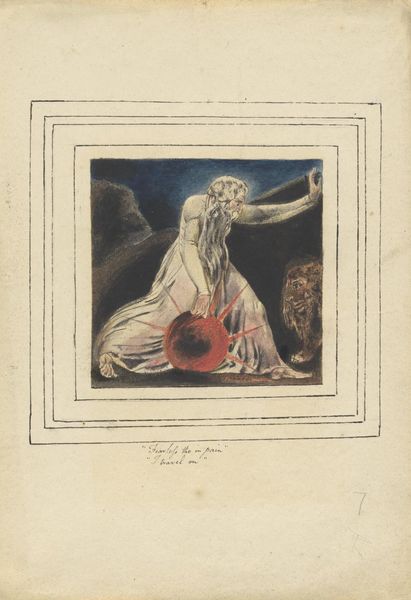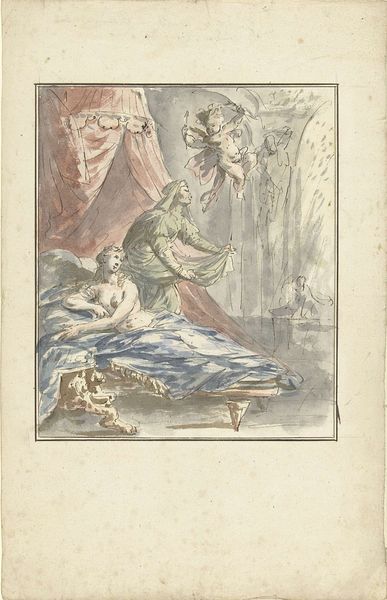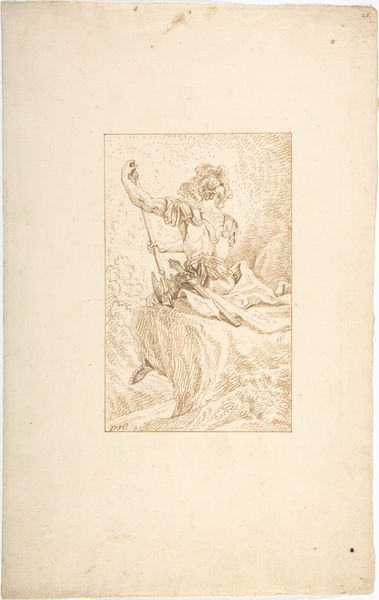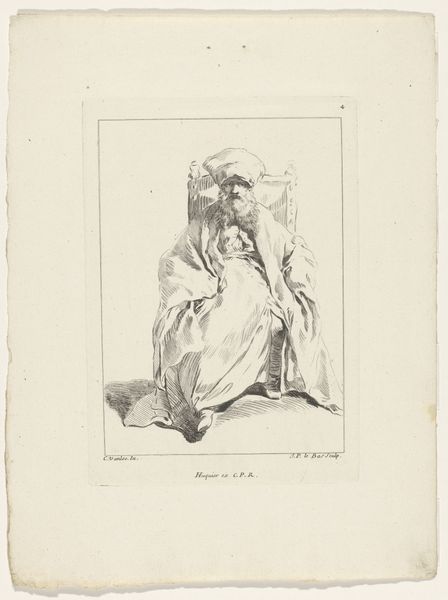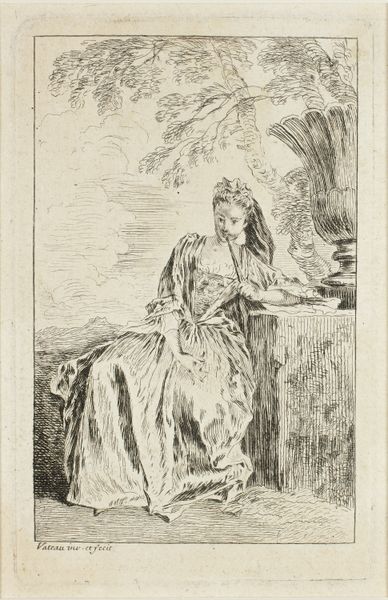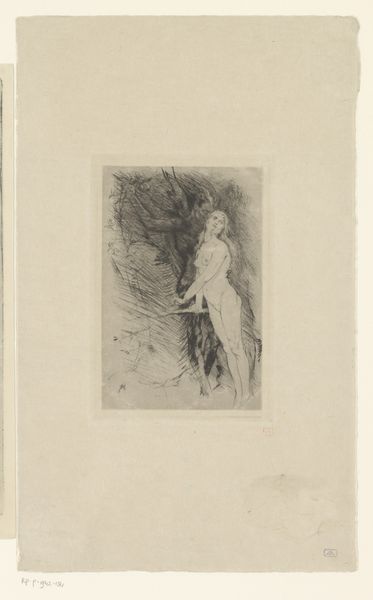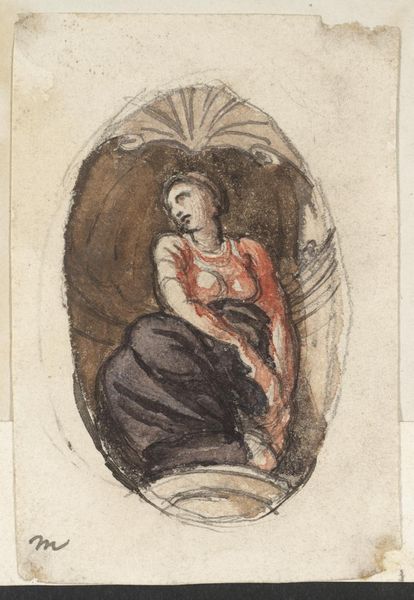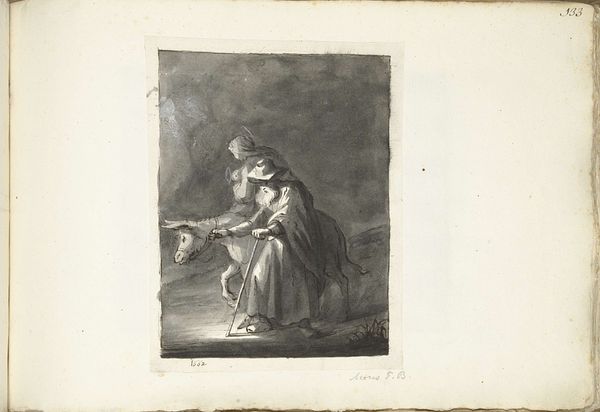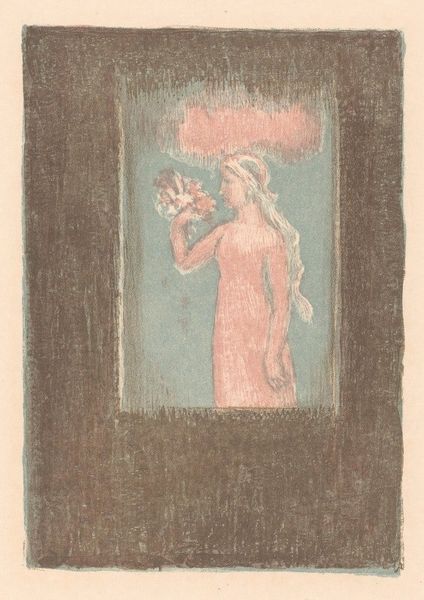
Dimensions: support: 270 x 184 mm
Copyright: CC-BY-NC-ND 4.0 DEED, Photo: Tate
Curator: I find myself immediately drawn to the figure’s posture – burdened, almost as if pushing against reality itself. Editor: And rightly so. This is William Blake's "First Book of Urizen, plate 21," currently housed at the Tate. Urizen represents reason and law in Blake's mythology, and here he seems to be shaping or constrained by a fiery sphere. Curator: The sphere is such a powerful visual element. It feels like a womb, or a prison – or perhaps both simultaneously. Given Blake’s personal mythology, is this sphere a symbol of Urizen’s self-imposed limitations, his attempt to confine the boundless? Editor: Precisely. The image, like much of Blake's work, challenges rigid systems and celebrates imagination. Notice the almost spectral lion lurking nearby. It adds a dimension of natural, untamed power that Urizen seeks to control. Curator: And there’s a tension between the sharp lines of the frame and the fluidity of Urizen's form. Blake's challenging us to see beyond the constraints of reason. Editor: Indeed. Blake used art as a tool to critique the politics of imagery. This work invites us to question the structures that limit our perceptions. Curator: A truly complex symbolic work that resonates through the ages. Editor: Blake's vision makes us reflect on the constant struggle between order and freedom.
